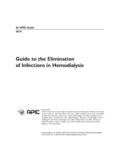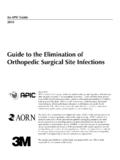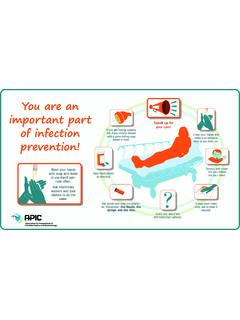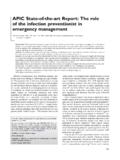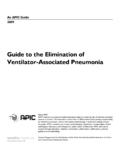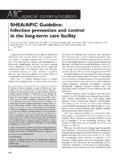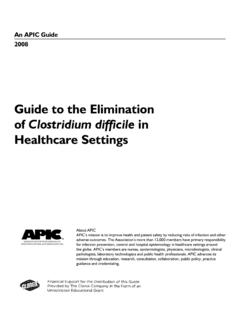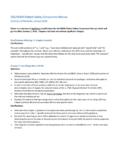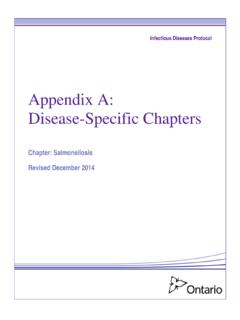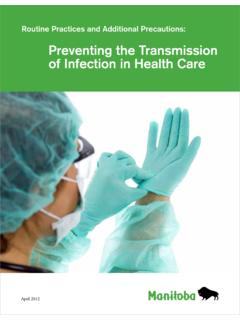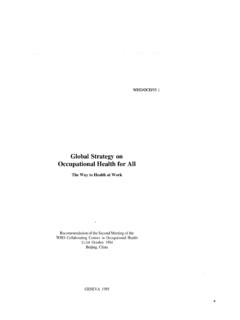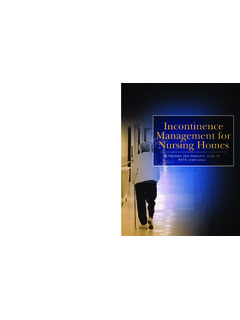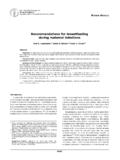Transcription of It Takes a Team: Preventing Infections in …
1 Follow fully the instructions on how to use cleaning anddisinfection supplies. Follow the manufacturers and ASC s instructions for cleaningand disinfecting medical equipment. Get training each year on high-level disinfection for all thedifferent types of scopes that are reprocessed. Make sure only highly trained experts perform high-leveldisinfection and sterilization. Keep the health care environment clean and safe. Make daily rounds (walk around) in the health careenvironment to assure cleanliness and patient safety. Report any environmental care problems as soonas possible so they can be fixed.
2 Clean hands when moving from a dirty to a clean task on thesame patient or after touching the patient or any items in thepatient s , Disinfection, and SterilizationEnvironment of CareSafe Injection Practices Clean hands before handling medications or syringes. Disinfect the top (rubber septum) of any medication vial withalcohol before piercing it with a sterile needle. Use a sterile needle and syringe one time on one patient only. Use an intravenous solution bag and tubing for onepatient only. Prepare medication in clean area, separate from patient carearea and away from used items.
3 If medication is used at thebedside, throw it out after it is used on one patient. Use a single-dose vial of medication whenever possible. Dedicate a multiuse vial to one patient if medication is drawnup in the patient care area. Always use a new, sterile needle and new, sterile in ambulatory surgery centers (ASCs) plays a role in Preventing surgical site and other harmful site Infections are Infections that can occur after surgery in the part of the body where the surgery took site Infections are *Patients and families should be encouraged to DangerousEach year in the , there are about 300,000 surgical site Infections .
4 Patients with surgical site Infections are 2 to 11 times as likely to die as a year in the , surgical site Infections cost between $ million and $1 site Infections are one of the most common healthcare-associated Infections , but most of them are * Because ASCs do not yet report surgical site infection data, these statistics are based on hospital hygiene is one of the most important ways to prevent Infections . Health care personnel will clean their hands before and after patient care. Other important ways to prevent surgical site and other Infections at ASCs are ASK staff if they have washed their hands BE ACTIVELY INVOLVED in care by Avoiding bringing their own medicalequipment to the ASC, unless grantedspecial permission to do so Always cleaning their own hands CLEARLY SPEAK UP if they have concernsthat staff may not be following safe practices or if they observe a safety issue 1.
5 SHEA, IDSA, AHA, et al. Frequently asked questions about surgical site Infections : Patient guide. Accessed April 22, 2016. 2. Anderson DJ, Podgorny K, Berr os-Torres SI, et al. Strategies to Prevent Surgical Site Infections in Acute Care Hospitals: 2014 Update. Infect Control Hosp Epidemiol. 2014 Sep;35 Suppl 2:S66-88. PMID: 25376070. more about infection prevention at ambulatory surgical centers at AHRQ Safety Program for Ambulatory SurgeryAHRQ Pub No. 16-0019-04-EF July 2016It Takes a Team
